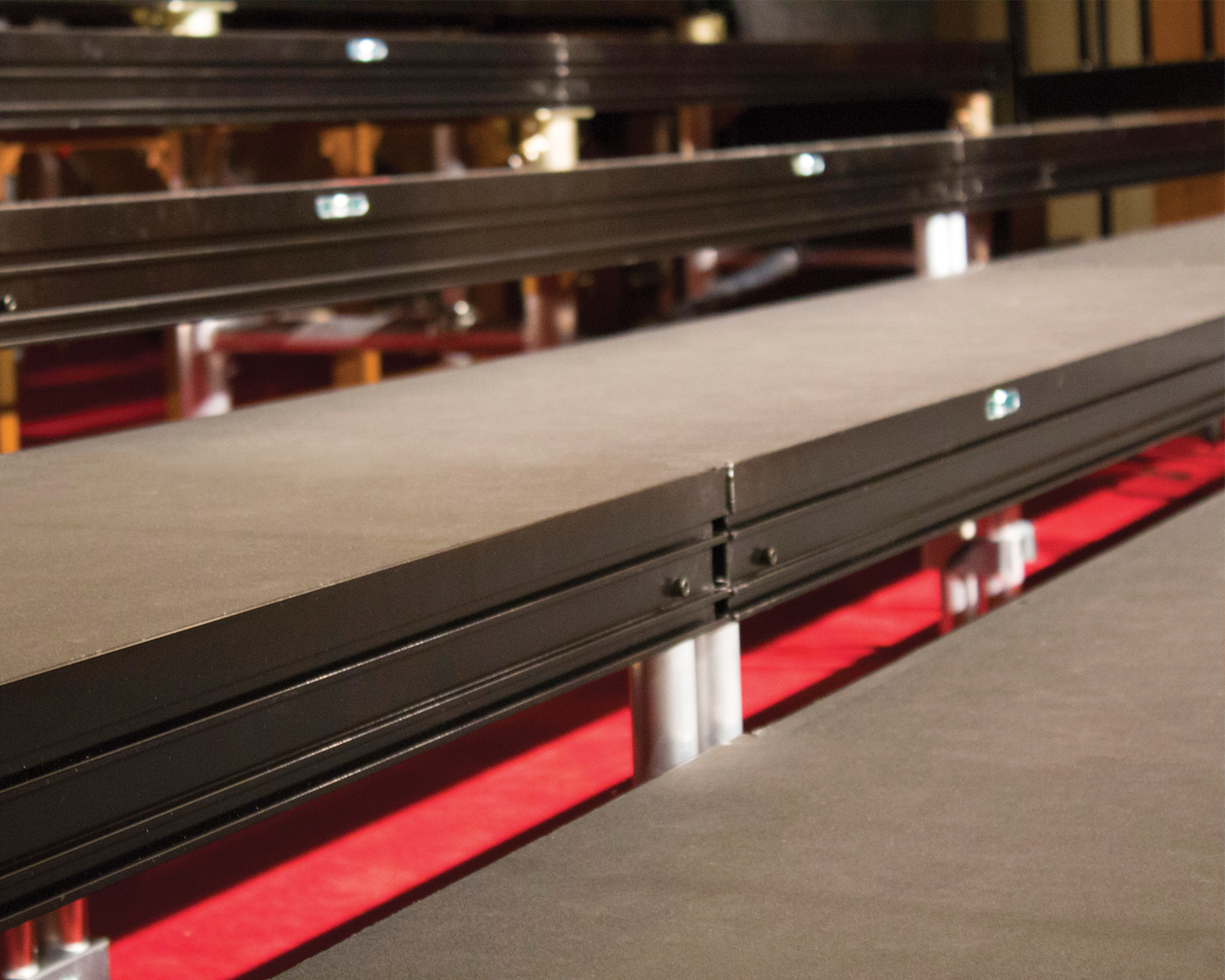
Some would say doing those two things at once is hard enough without worrying that the surface beneath the performers might not be sturdy enough to stand up with the abuse.
Considerations After Safety
Choir directors would also say that after safety, there are many other aspects that need to be considered when purchasing staging. For instance, using different heights and shapes for stages might be just what their competition show needs to take it to the next level. In addition, the stage set has to be easy to put up and to take down by the stage crew students and the booster club parents.
Many of the national show choir competitions make the time used to put up and take down their sets part of the overall score—a time limit is set and the choir will get deductions for every minute they go over. Therefore, it needs to be fast, easy, and intuitive for setup and take down. It would be a shame for the students who work so hard on their show to be penalized for that.
Controlling Chaos
Greg Nelson, Senior Product Manager with Wenger Corporation, recalls how he first came up with the design for their product StageTek about four years ago. He was backstage at a national competition in Chicago to observe what was going on underneath the platforms—seeing brackets and clamps coming loose and rattling and even sometimes falling to the ground. In addition to that, he observed a lot of show choir fathers putting together their children’s stages with duct tape and zip ties. Some had the pieces color-coded and others number-coded, and everyone was moving as fast as they could, so their choir wouldn’t be penalized for taking too long with the process. It was chaos.
He walked away from the weekend knowing that they needed to come up with a product that addressed all those needs. He said, “We decided the high water mark for stage design was high school show choir.”
They designed StageTek with booster club Dads in mind. “We thought legs that plug into place would be the best way—very simple and straightforward.” He added that the legs can be adjustable for different kinds of stage setup. They also made easy handholds part of the design so the Dads could prevent injuries from sharp edges.
Facing Challenging Spacing Demands
Jessica Ley, Marketing and Communications Coordinator for Staging Concepts, says that customization is one of her company’s greatest assets. During the holiday season, they revamped a then 40-year-old riser space and designed a custom choral riser that could hold up to 200 members at a time.
The structure combined Staging Concepts’ SC90 Platforms, SC9600 Bridge Supports, IBC Guardrails, and various accessories. Ley explains that a great deal of customization goes into any project, particularly when faced with challenging space demands. For one recent project, pictured in this article, Ley explains that their engineers designed a system that sits flush against the surrounding walls and existing communion rails. She added that they can create modular systems that suit multiple purposes: “No matter the final layout, our platforms and correlating products can be easily setup and taken down within a short amount of time by just a few people.”
Customization Capable of Anything
Rick Roe, Marketing Manager at StageRight, offered insight about their specialty projects designed specifically to enhance show choirs. He explains that while the typical systems do not exceed 32” in height (4 level), StageRight has offered and sold up to 78” systems before and it’s common to go up to 40” and 56” heights for a 7-level riser.
He said that while most show choir groups buy the standard size decks (4 x 8, 4 x 4, and standard Pie wedges at the 8-24” heights,) StageRight is capable of “anything including round and custom trapeze shapes and would like to see this in the future.”
Roe went on to say that they have manufactured standard and custom ramp systems for groups looking for something new or who are tired of the standard stairs. They have designed something really unique for a different venue. Roe adds, “The shape and size makes sense for a show choir really looking to do something a bit over the edge.”
Similarly, Nelson said that he had always been told by rental companies that they were the hardest on stages, and he would say, “No, when you have 30 or 40 kids all running sideways and stopping simultaneously, that’s inertia and momentum that you don’t replicate anywhere else.” He reiterated, “When it comes to staging products, a high school show choir is definitely as intense as anything you would put on a stage—the high-water mark for what stages need to be.”











